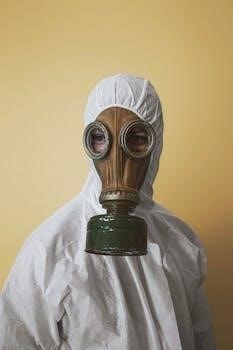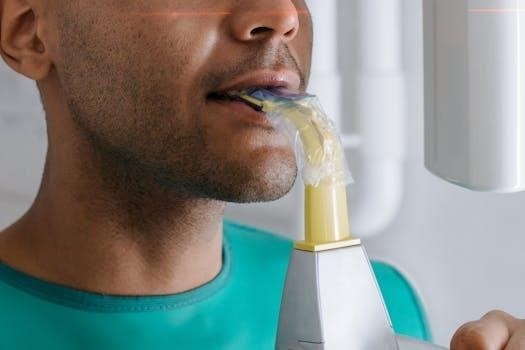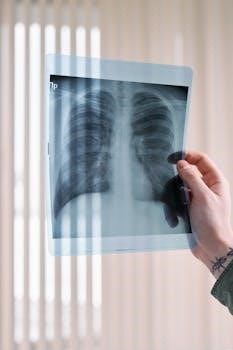Radiation Protection in Medical Radiography 9th Edition
Master the basic principles and techniques of radiation safety with the Radiation Protection in Medical Radiography, 9th Edition. This resource simplifies complex concepts in radiation protection, radiobiology, and radiation physics. Concise, full-color coverage discusses the safe use of ionizing radiation.
Basic Principles of Radiation Safety
Understanding the fundamental principles of radiation safety is paramount in medical radiography. These principles form the bedrock of practices designed to minimize radiation exposure to both patients and personnel. Key among these is the concept of ALARA⁚ As Low As Reasonably Achievable. This principle emphasizes the continuous effort to reduce radiation dose, even if current levels are below regulatory limits.
Time, distance, and shielding are the three cardinal rules. Minimizing the time of exposure, maximizing the distance from the radiation source, and utilizing appropriate shielding materials are crucial. These measures collectively contribute to a safer environment. Furthermore, understanding the characteristics of ionizing radiation, including its interaction with matter, is essential for implementing effective protection strategies. This knowledge empowers radiographers to make informed decisions, ensuring optimal image quality while maintaining the highest standards of safety. Education and training also play a vital role.
Understanding Radiobiology
Radiobiology is the study of the effects of ionizing radiation on living organisms. Understanding these effects is crucial for radiation protection in medical radiography. Radiation can interact with cells, causing damage to DNA and other critical molecules. This damage can lead to a range of biological consequences, from cell death to mutations that may result in cancer.
The sensitivity of cells to radiation varies depending on factors such as their rate of division and degree of differentiation. Rapidly dividing cells, such as those in bone marrow and the gastrointestinal tract, are generally more sensitive. Radiobiology explores the mechanisms of radiation damage, including direct and indirect effects. Direct effects occur when radiation interacts directly with DNA, while indirect effects involve the formation of free radicals that can damage cellular components. Understanding these processes allows for the development of strategies to mitigate radiation damage and protect patients and personnel. This field provides the biological basis for radiation safety practices.
Radiation Physics Concepts
Grasping radiation physics is essential for ensuring safety in medical radiography. This field encompasses the nature of radiation, its interactions with matter, and the principles governing its behavior. Ionizing radiation, including X-rays and gamma rays, possesses sufficient energy to remove electrons from atoms, leading to ionization. This process can disrupt molecular structures and cause biological damage.
Key concepts in radiation physics include attenuation, absorption, and scattering. Attenuation refers to the reduction in radiation intensity as it passes through matter. Absorption occurs when radiation energy is transferred to the absorbing material. Scattering involves the redirection of radiation in different directions. Understanding these interactions is crucial for optimizing image quality and minimizing patient dose. Furthermore, radiation physics provides the foundation for understanding the operation of imaging equipment, such as X-ray tubes and detectors. By mastering these concepts, radiographers can make informed decisions to ensure safe and effective imaging procedures. The principles of time, distance, and shielding are also rooted in radiation physics.

Safe Use of Ionizing Radiation
The safe use of ionizing radiation requires a thorough understanding of radiation protection principles. It also necessitates the implementation of effective safety practices to minimize exposure to patients, personnel, and the environment.
Imaging Modalities and Radiation Safety
Different imaging modalities utilize varying levels of ionizing radiation, necessitating specific safety protocols. Radiography, fluoroscopy, computed tomography (CT), and nuclear medicine each present unique challenges and considerations for radiation protection. In radiography, minimizing exposure time and employing proper collimation are crucial. Fluoroscopy requires careful attention to beam-on time and the use of pulsed fluoroscopy to reduce dose. CT scans involve higher radiation doses, emphasizing the importance of optimizing scan parameters and justifying each examination. Nuclear medicine utilizes radiopharmaceuticals, requiring strict handling and disposal procedures to prevent contamination.
Understanding the radiation output characteristics of each imaging modality is essential for implementing effective safety measures. This includes employing appropriate shielding, using personnel monitoring devices, and adhering to established protocols for patient and staff protection. Regular equipment calibration and quality control procedures are also vital for ensuring accurate and safe imaging practices. By prioritizing radiation safety in all imaging modalities, healthcare professionals can minimize the risks associated with ionizing radiation while maximizing the diagnostic benefits for patients.
Effects of Radiation on Humans
Exposure to ionizing radiation can have both immediate and long-term effects on human health. These effects are categorized as either deterministic or stochastic. Deterministic effects, such as skin burns or radiation sickness, occur at high doses of radiation and have a threshold below which they are not observed. The severity of deterministic effects increases with the dose received. Stochastic effects, such as cancer and genetic mutations, are random and probabilistic, with no threshold. The probability of these effects occurring increases with dose, but the severity is independent of dose.
The human body’s response to radiation depends on factors such as the dose, dose rate, type of radiation, and the individual’s age and health status. Rapidly dividing cells, such as those in bone marrow, the gastrointestinal tract, and developing fetuses, are particularly sensitive to radiation. Understanding the mechanisms by which radiation interacts with cells and tissues is crucial for assessing the risks and implementing appropriate protective measures. Furthermore, it is important to be aware of the potential for both acute and chronic effects following radiation exposure.

Regulatory and Advisory Limits
Understanding regulatory and advisory limits is key to radiation safety. These limits, established by organizations, guide safe radiation practices; They ensure the protection of both radiation workers and the general public from harmful radiation exposure during medical imaging.
Exposure Limits for Radiation
Exposure limits for radiation are crucial for minimizing risks in medical radiography. These limits, established by regulatory bodies like the NCRP and ICRP, specify the maximum permissible dose for radiation workers and the general public. Understanding these limits is essential for implementing effective radiation protection strategies.
Different exposure limits apply to various parts of the body and exposure scenarios; Occupational limits are higher than public limits due to the assumption that radiation workers are trained and monitored. The ALARA principle (As Low As Reasonably Achievable) guides practice, emphasizing that exposure should be kept as low as possible, even below regulatory limits.
Effective dose limits consider the sensitivity of different organs to radiation. Monitoring radiation exposure through dosimetry helps ensure compliance with these limits. Regular review and updates to exposure limits reflect advancements in scientific understanding of radiation’s effects. Adherence to these limits is a cornerstone of radiation safety.
Radiation Safety Practices
Implementing effective radiation safety practices is paramount in medical radiography. These practices aim to minimize radiation exposure to patients, personnel, and the public. Key elements include proper shielding, collimation, and technique optimization. Shielding materials like lead are used to absorb radiation, protecting individuals from unnecessary exposure.
Collimation restricts the X-ray beam to the area of interest, reducing scatter radiation. Technique optimization involves using the lowest possible radiation dose while maintaining image quality. Regular equipment maintenance and calibration are essential for ensuring accurate and safe operation; The use of personal protective equipment, such as lead aprons and gloves, provides an additional layer of protection.
Education and training play a vital role in promoting a culture of radiation safety. Staff must be knowledgeable about radiation hazards and safety protocols. Consistent monitoring and enforcement of safety procedures are crucial for maintaining a safe working environment. By adhering to these practices, medical facilities can significantly reduce radiation risks.

Nuclear Power Plant Crisis Impact

The nuclear power plant crisis following the 2011 earthquake/tsunami in Japan highlighted the far-reaching consequences of radiation exposure. This event underscored the importance of understanding radiation risks and implementing robust safety measures. The crisis led to widespread contamination, necessitating evacuations and long-term monitoring of affected populations.
The impact extended beyond immediate health effects, affecting agriculture, fisheries, and the overall economy. Lessons learned from the crisis have prompted a reevaluation of nuclear safety protocols worldwide. The need for improved emergency response plans and public awareness campaigns became evident.
The long-term effects of radiation exposure from the disaster continue to be studied, focusing on potential health risks and environmental impacts. This event serves as a stark reminder of the potential for catastrophic events and the critical role of radiation protection in safeguarding public health and the environment. Enhanced safety regulations and international cooperation are crucial to prevent similar incidents in the future.
